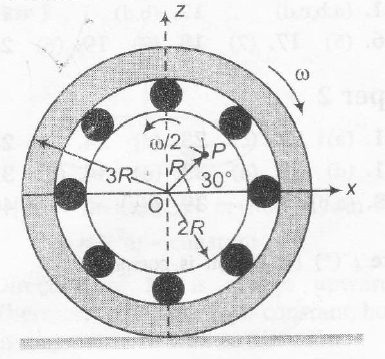The figure shows a system consisting of (i) a ring of outer radius 3R rolling clockwise without slipping on a horizontal surface with angular speed ω and (ii) an inner disc of radius 2R rotating anti-clockwise with angular speed ω/2. The ring and disc are separated by frictionless ball bearings. The system is in the x-z plane. The point P on the inner disc is at a
distance R from the origin, where OP makes an angle of 300 with the horizontal. Then with respect to the horizontal surface.
